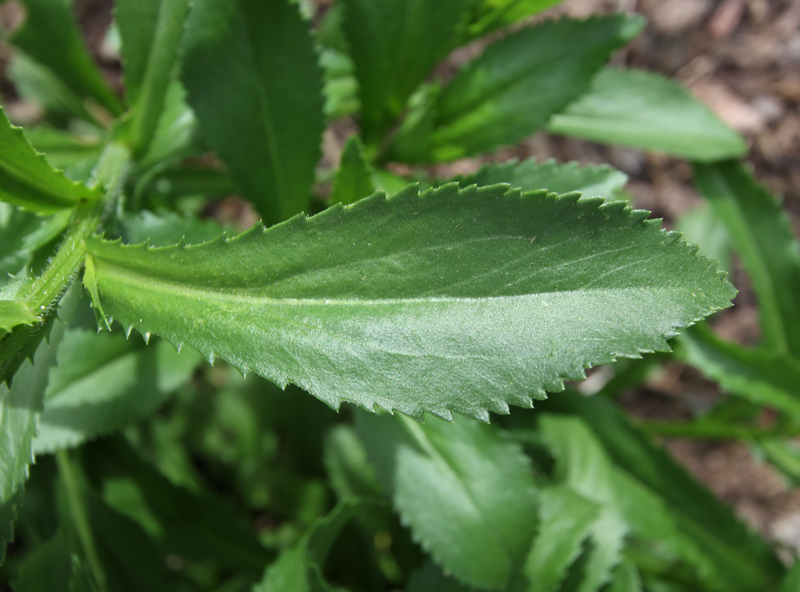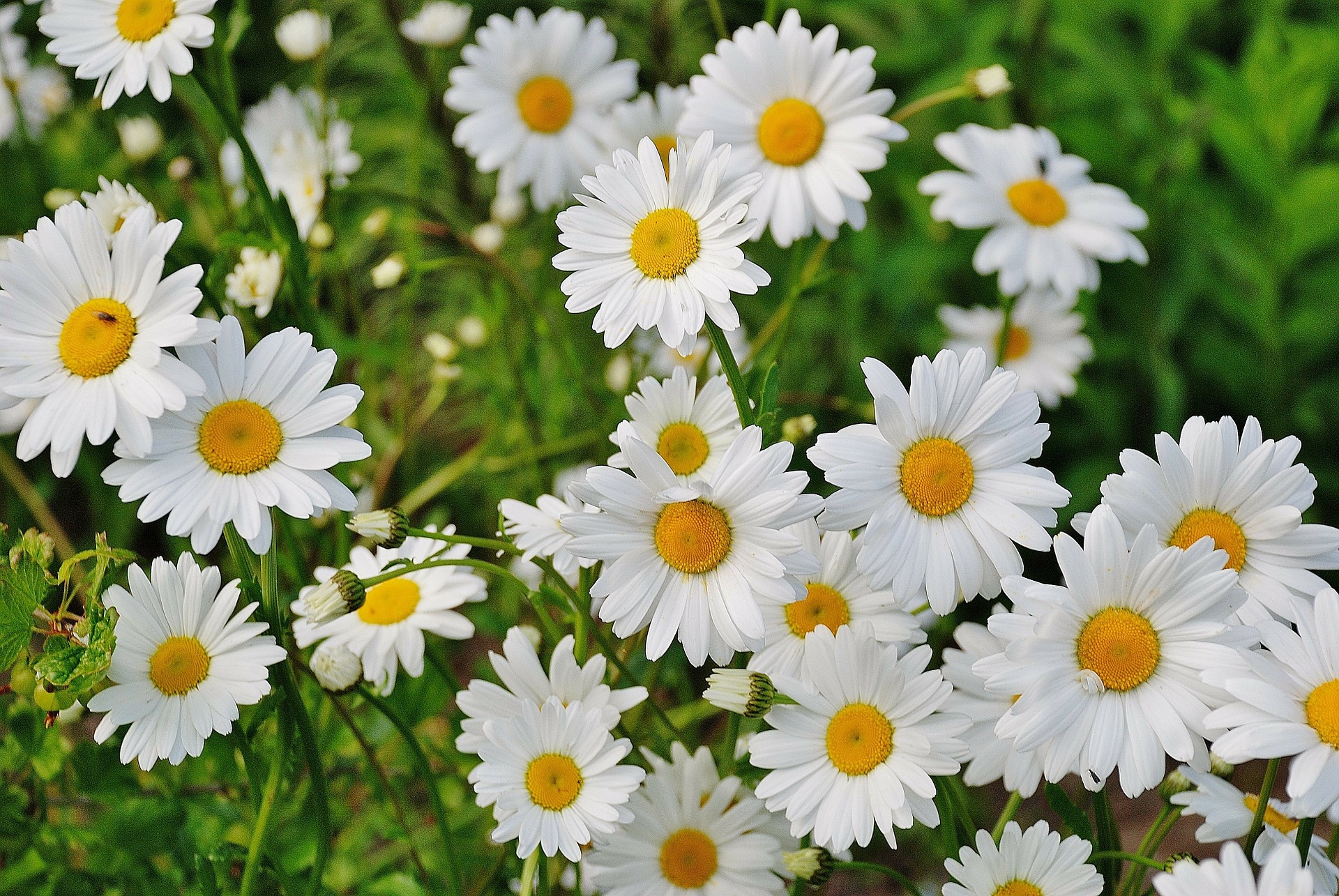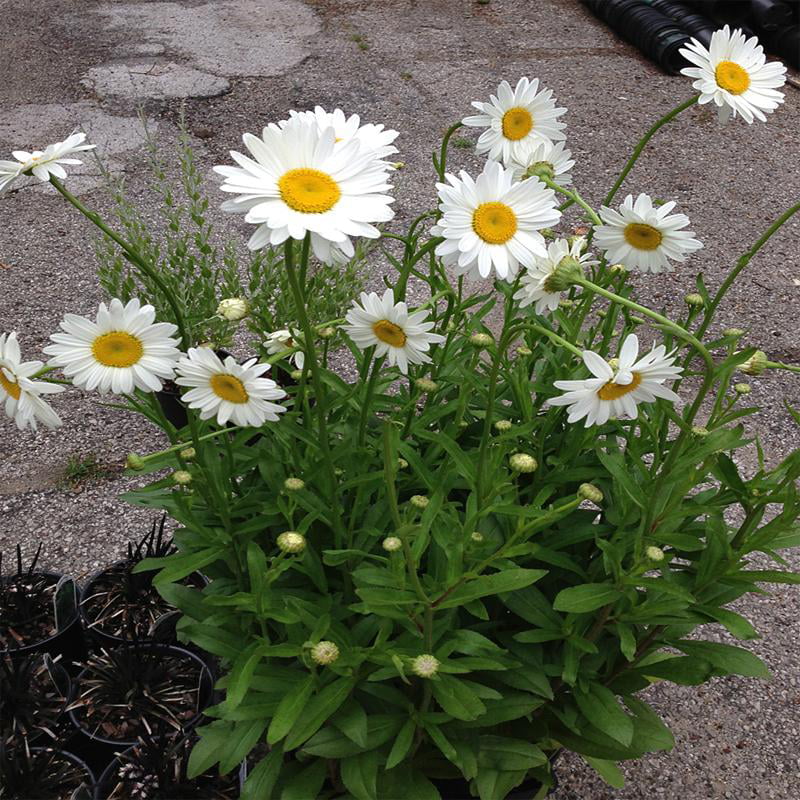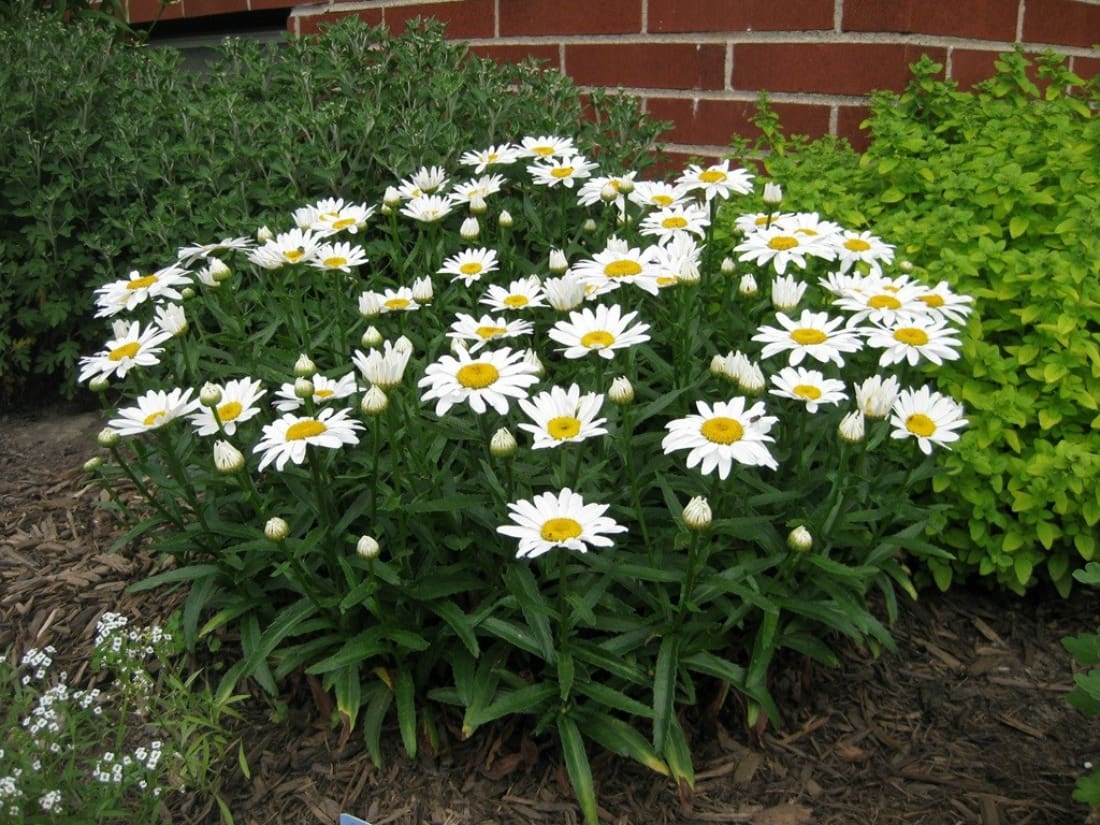
Shasta Daisy & Dandelion Greens with Yucca Antipasto Wild Food Girl
Shasta daisies are one of the easiest perennials to grow. They prefer, but do not necessarily need, moist yet well-drained soil. Fertilize monthly with a granular fertilizer like Osmocote, and liquid-feed weekly if desired.

Leucanthemum x superbum (Shasta Daisy) North Carolina Extension
Key Takeaways Shasta daisies can be susceptible to various diseases and pests, which can cause stunted growth, yellowing leaves, and even death. Common problems include powdery mildew, root rot, and aphids, which can be caused by improper watering, poor soil quality, and lack of sunlight.

Shasta Daisies How to Plant, Grow, and Care for Daisy Flowers The
Named after the snowy peaks of Mount Shasta in California, the Shasta daisy ( Leucanthemum x superbum ) is a hardy hybrid developed in the 1800s by crossing the oxeye daisy with several wild daisy varieties. Today, there are 69 unique cultivars of the Shasta Daisy, according to the Royal Horticulture Society.

Longlasting Shasta Daisies brighten the summer garden
Shasta daisy is a member of the Asteraceae or aster family, a group noted for its starburst-shaped flowers. Plants in the Leucanthemum genus are native to Europe and Asia, but the Shasta daisy itself is American. Developed near snowy Mount Shasta in Northern California, Shasta daisies are the result of a quadruple hybrid cross.

Shasta Daisy Daisy, Gardening, Plants, Margarita Flower, Lawn And
Nadia Hassani Updated on August 3, 2023 In This Article View All Where to Plant Planting Tips Care Pests and Problems Propagation Easy, always fresh, and always eye-catching, Shasta daisy is a longtime garden favorite.

Photo of the leaves of Shasta Daisy (Leucanthemum 'Real Glory') posted
Root Rot Another reason why Shasta daisies turn brown is root rot. Root rot is caused by a fungus that thrives in wet soil and can cause the roots to rot. Symptoms of root rot include brown leaves, wilting, and stunted growth. To prevent root rot, make sure the soil is well-draining and avoid overwatering.

Shasta Daisy Plants, Outside living, Genealogy sites
Description Shasta daisies are old-fashioned favorites for perennial borders and cut flowers, with single and double-flowered cultivars available. Plant in average to dry well-drained garden soil in full sun to partial shade. Use in the perennial border, containers, cutting garden or cottage garden.

Becky Shasta Daisy Plant, White Summer Flowers, Live Perennial for
Shasta daisy is a vigorous perennial and benefits from an annual mulch of compost or manure, and a late winter/early spring feed with slow-release fertilizer. Support tall-growing varieties, ideally with grow-through supports put in place during spring that quickly become hidden. Either buy ready-made ones, make your own from canes and string.

Prickly and Bitter I hasta have this Shasta Daisy!
Watering: Provide an average amount of water. Soggy soil can lead to root rot. Shasta daisy is moderately drought tolerant once established. Water more frequently during prolonged heat or dry spells. Fertilizing: In spring, spread a thin layer of compost around the base of plants or apply a slow-release all-purpose fertilizer.

shasta daisy foliage Plant identification, Plant leaves, Plants
Shasta daisy Alaska 'Alaska' Shasta daisy is a bit shorter, topping out at just 2 or 3 feet tall. The strong stems don't need to be staked. While all Shasta varieties are drought-tolerant, I find this variety to be particularly tolerant of dry conditions. Full sun is best since the plants can get a little floppy in shadier conditions.

Snow Lady Shasta Daisy Plant Library Pahl's Market Apple Valley, MN
Soil Keep soil moderately rich and fertile so that these flowers bloom. Shasta Daisies are not too particular about soil conditions, as they can survive in rich soil or soil with organic matter or compost. Soil should be well-drained because these flowers do not tolerate soggy soil.

Why Won’t My Shasta Daisies Bloom Getting Shasta Daisies To Bloom
Shasta daisies' yellowing leaves might indicate a number of different problems. Lack of certain nutrients, notably iron, is one possible reason. Chlorosis, a disease where the veins are green but the leaves are yellow, may result from a lack of iron. It's crucial to provide the plant the right nourishment, which includes a micronutrient.

Shasta daisy the controlled variety! Plants, Shasta, Daisy
Shasta daisy flowers provide perky summer blooms, offering the look of the traditional daisy along with evergreen foliage that lasts year-round in many locations. When you learn how to grow Shasta daisy, you'll find it to be the perfect, low maintenance perennial for naturalizing and filling in bare spots in the landscape.

Pin on Fla fla flowers
The plant is a hybrid that was developed by Luther Burbank in 1901. While some daisies come in a variety of colors, most Shasta Daisy colors are limited to white petals with a yellow center and dark green glossy leaves. (There are a few with yellow petals, too.)

Shasta Daisy "Alaska" Orchids, Plants, Shasta
Fertilizing: Shasta daisies benefit from regular feeding to ensure robust growth and abundant blooms. Use a balanced, slow-release fertilizer formulated for flowering plants. Apply the fertilizer according to the manufacturer's instructions, usually once every four to six weeks during the growing season.

Pin on Gardening Flowers, Roses and Plants
Shasta daisy, also known as Leucanthemum x superbum, is a powerful herbal remedy. Native to Europe, this plant has been used for medicinal purposes since ancient times. Its leaves are brewed into teas and tinctures to reduce inflammation, while its root can be consumed to reduce fever and act as a digestive aid.